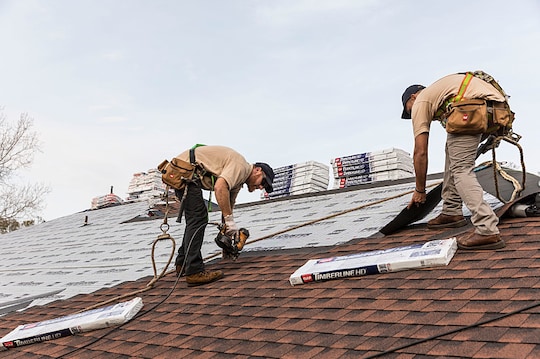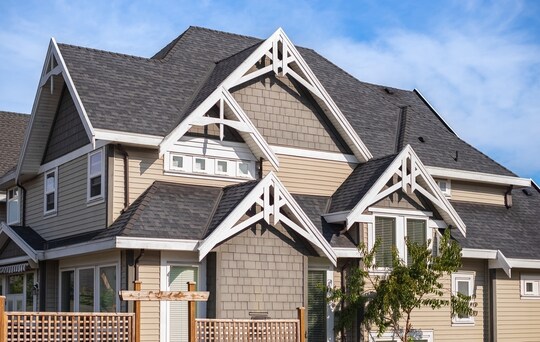
There are many factors that can potentially impact a home's value, but if you're looking to build equity in your home for an upcoming move, or sale of the home, you may be wondering: does a new roof increase home value? While the added value of a new roof may not recover the full cost of installing one, it's important to keep in mind that a new roof can help impact the value of a home in more ways than one. Everything from the roofing materials used to your existing roof's condition can affect whether it's worth replacing. Here's how a new roof could impact your home's value.
How Can a New Roof Increase Home Value?
A new roof is a great way to enhance your home's curb appeal. Since a roof is one of the first features people notice when looking at a home, a visually-appealing one can potentially lead to a higher value. On the other hand, an old roof with damaged shingles can lower a home's value because of its poor appearance.
A new roof may also make potential buyers more comfortable spending a little more money on a home since they probably won't have to deal with an expensive roof replacement shortly after the purchase. Many roofs also come with a transferable warranty, which can be a great selling point when you put your home on the market.
How Much Can a New Roof Increase Home Value?
According to a 2023 Cost vs Value report from Remodeling Magazine, a roof replacement adds an average resale value of $17,807 to the price of a home. Depending on the cost of your roof replacement, this means you may or may not recover the total cost in the sale of your home, but in certain circumstances, getting a new roof is still beneficial, depending on your roof's condition. As the most common type of roof in the United States, asphalt roof shingles, such as GAF Timberline HDZ® Shingles can be a great choice for a new roof to help increase the value of your home.
Should You Replace Your Roof before You Sell?
Whether you should replace your roof before selling depends on several factors, and the question "does a new roof increase home value?" is just one of them. If, for instance, your roof is visibly older, it can lower curb appeal, impacting your home's value. Old roofs may also be damaged or have problems like broken or buckled shingles, sagging, water leaks, or granule loss, which can contribute to a lower selling price.
Additionally, most home inspectors survey the roof and reveal any issues to the buyers before closing. Issues can make it more challenging to sell your home, as most people don't want to deal with costly roof repairs right after buying a house.
On the other hand, if your roof is relatively new or in good condition, it may not need to be replaced. If you're not sure, it doesn't hurt to have a roofing professional inspect it before you decide to replace it.
If you want to install a new roof, find a reliable roofer in your area. A GAF-certified roofing contractor* can install a high-quality roof that will help you sell your home.
*Los contratistas inscritos en los programas de certificación de GAF no son empleados ni agentes de GAF, y GAF no controla ni supervisa de otro modo estas empresas independientes. Los contratistas pueden recibir beneficios, como puntos y descuentos de recompensa por lealtad en herramientas de comercialización de GAF por participar en el programa y ofrecer a GAF garantías mejoradas, que requieren el uso de una cantidad mínima de productos de GAF. Your dealings with a Contractor, and any services they provide to you, are subject to the GAF Contractor Terms of Use.




